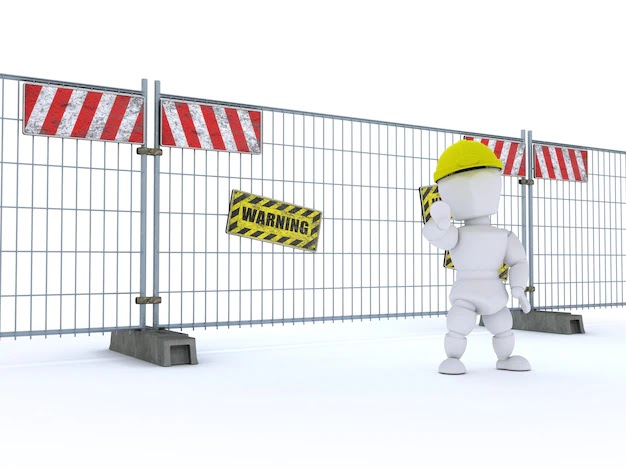
Handling Difficult Conversations
I. Why Are Difficult Conversations So Challenging?
Difficult conversations trigger emotions. People often fear confrontation, worry about hurting others’ feelings, or feel unsure about how to communicate their thoughts effectively. Some of the reasons why difficult conversations feel challenging include:
1. Fear of Conflict: Many people avoid difficult conversations because they fear conflict or confrontation. They worry about escalating the situation or causing more tension.
2. Emotional Charge: Sensitive topics often carry a lot of emotional weight. Conversations about relationships, work performance, or personal issues can stir up feelings of anger, sadness, anxiety, or defensiveness.
3. Uncertainty: People may avoid tough conversations because they are unsure how the other person will react or how to approach the situation tactfully.
4. Fear of Negative Consequences: The potential for damaging a relationship or facing backlash makes difficult conversations more intimidating.
Despite these challenges, it’s important to face tough conversations head-on, as they can lead to growth, resolution, and deeper understanding.
II. Preparation: Setting the Stage for Success
One of the most effective ways to handle difficult conversations is to prepare ahead of time. Planning how you’ll approach the situation allows you to clarify your thoughts, choose the right language, and stay composed during the discussion. Here’s how to prepare:
1. Clarify Your Purpose: Before entering the conversation, reflect on your purpose. What do you want to achieve? Are you looking for a resolution, clarity, or an opportunity to express your feelings? Being clear about your intentions will help guide the conversation and prevent it from going off track.
- Example: If you’re having a conversation about a conflict with a colleague, your purpose might be to find a solution that works for both parties, rather than proving who’s right.
2. Anticipate Reactions: Think about how the other person might respond. Will they be defensive? Upset? Uncomfortable? Preparing for potential reactions helps you stay calm and grounded if emotions run high. Additionally, it allows you to craft a more compassionate approach based on the other person’s perspective.
3. Plan Your Key Points: It’s easy to get sidetracked during a difficult conversation. By outlining the key points you want to address beforehand, you’ll stay focused and avoid unnecessary tangents. Make sure your points are clear, concise, and constructive.
- Example: If you need to give constructive feedback to an employee, list specific behaviors or actions that need improvement, rather than making vague or generalized statements.
4. Choose the Right Time and Place: Timing and environment matter. Choose a private and neutral setting where you can have an uninterrupted conversation. Avoid discussing sensitive topics in public or when either party is stressed or distracted. Ensuring both of you are in the right mindset increases the chances of a productive conversation.
III. During the Conversation: Staying Calm and Compassionate
When you’re in the midst of a difficult conversation, emotions can run high. However, staying calm, compassionate, and open-minded can keep the discussion productive and reduce the likelihood of escalating tension. Here’s how to navigate the conversation:
1. Use “I” Statements: Using "I" statements helps prevent the conversation from feeling accusatory or confrontational. Instead of pointing fingers, you’re taking responsibility for your feelings and perspective, which makes the other person less likely to become defensive.
- Example: Instead of saying, “You never listen to my ideas,” try saying, “I feel unheard when my ideas aren’t acknowledged.”
This approach shifts the focus to your experience and invites collaboration rather than blame.
2. Practice Active Listening: One of the most important aspects of handling difficult conversations is listening. Often, we’re so focused on what we’re going to say next that we forget to really hear the other person. Active listening involves fully concentrating on what the other person is saying, without interrupting or forming rebuttals in your mind.
- Show empathy: Use verbal and non-verbal cues like nodding, maintaining eye contact, and saying, “I understand,” or “That makes sense.”
- Ask open-ended questions: This encourages the other person to share more and shows that you’re genuinely interested in their perspective.
- Reflect what you hear: Paraphrase what the other person has said to ensure you’ve understood their point. For example, “So what I’m hearing is that you feel frustrated because…”
3. Stay Calm and Composed: It’s natural for emotions to rise during difficult conversations, but staying calm is essential for keeping the dialogue productive. If you feel yourself getting upset or defensive, take a deep breath, and pause before responding. This gives you a moment to collect your thoughts and prevents you from saying something you might regret.
If emotions are running too high, it’s okay to suggest taking a break and returning to the conversation later when both parties are calmer.
4. Focus on Solutions, Not Blame: When discussing conflict, it’s easy to fall into the trap of assigning blame. However, this only intensifies the situation. Instead, focus on finding solutions. Shift the conversation from “who’s at fault” to “how can we move forward.” This reframing encourages collaboration and reduces defensiveness.
- Example: If you’re addressing a recurring issue with a partner, instead of saying, “You always leave the house a mess,” try, “How can we work together to keep the house cleaner?”
By focusing on solutions, the conversation becomes more constructive and goal-oriented.
5. Be Open to Feedback: Difficult conversations are a two-way street. While you may need to express your concerns, it’s also important to be open to hearing the other person’s perspective. They may have feedback for you that you weren’t expecting. Approach their input with an open mind and be willing to acknowledge your role in the situation.
IV. After the Conversation: Reflect and Follow Up
Once the conversation is over, the work doesn’t stop. It’s important to reflect on what was discussed and follow up if necessary. Here’s how to wrap things up:
1. Reflect on the Conversation: After the conversation, take some time to reflect on how it went. Did you achieve your goal? How did the other person respond? Were there any moments where emotions ran high, and how did you handle them?
- Example: Reflecting helps you assess what went well and what could be improved for future conversations. It’s also an opportunity to check in with yourself emotionally and process any lingering feelings.
2. Follow Up if Needed: Sometimes, a single conversation isn’t enough to resolve an issue. If that’s the case, be proactive about following up. Whether it’s checking in on progress, clarifying points that were misunderstood, or discussing further solutions, ongoing communication ensures that the conversation doesn’t fizzle out without resolution.
- Example: If you had a conversation with a colleague about improving communication, follow up a week later to see if the changes are working for both parties.
3. Practice Gratitude and Appreciation: If the conversation went well and led to positive changes, express gratitude to the other person. Acknowledging their effort and willingness to engage in the conversation reinforces positive behavior and strengthens your relationship.
- Example: “I really appreciate how open you were to discussing this issue with me. It means a lot that we were able to work through it together.”
V. Common Pitfalls to Avoid in Difficult Conversations
While handling difficult conversations gracefully is an essential skill, there are common pitfalls that can derail even the best intentions. Here are a few to watch out for:
1. Avoiding the Issue: The longer you avoid a difficult conversation, the more tension builds. Address the issue as soon as it’s appropriate to prevent it from escalating.
2. Interrupting: Cutting off the other person before they’ve finished speaking signals that you’re not really listening. Let them finish their thought before responding.
3. Letting Emotions Take Over: While it’s natural to feel emotional during tough conversations, letting your emotions control the discussion can lead to unproductive arguments. Stay calm and composed.
4. Going Off-Topic: It’s easy to veer off-topic during difficult conversations, especially if past grievances resurface. Stick to the issue at hand to keep the conversation focused and productive.
5. Overgeneralizing: Avoid using words like “always” or “never” during difficult conversations. These overgeneralizations can make the other person feel defensive and invalidate their efforts.

Conclusion
Handling difficult conversations with grace is a skill that can transform your relationships—both personal and professional. By preparing ahead of time, practicing empathy, staying calm, and focusing on solutions, you can navigate even the most challenging topics with confidence. While these conversations may never be easy, approaching them with openness, compassion, and respect will lead to better outcomes and stronger connections.
Difficult conversations are opportunities for growth, understanding, and collaboration. The more you practice, the more skilled you’ll become at turning potentially uncomfortable discussions into positive, productive experiences.
FAQ
Ques 1: Why are difficult conversations so challenging?
Ans: Difficult conversations are challenging because they often involve emotional, sensitive, or high-stakes topics. People may fear conflict, worry about hurting others' feelings, or be uncertain about how to communicate their thoughts effectively. This fear of negative consequences, combined with emotional charge, makes these conversations uncomfortable for many.
Ques 2: How can I prepare for a difficult conversation?
Ans: Preparation is key to handling tough conversations gracefully. Start by clarifying your purpose—what do you want to achieve? Plan your key points, anticipate how the other person might react, and choose an appropriate time and place for the discussion. Being mentally and emotionally prepared helps you approach the conversation with clarity and confidence.
Ques 3: What should I do if emotions run high during the conversation?
Ans: If emotions start to escalate, it’s important to stay calm. Take a deep breath, pause, and give yourself a moment to collect your thoughts before responding. If emotions become overwhelming for either party, it’s okay to suggest taking a break and returning to the conversation later when both are calmer.
Ques 4: How can I ensure the conversation is productive rather than confrontational?
Ans: Use “I” statements to express your feelings without sounding accusatory, and practice active listening to show empathy and understanding. Focus on finding solutions rather than assigning blame, and be open to feedback from the other person. Staying calm and collaborative keeps the conversation productive.
Ques 5: What should I do after the conversation?
Ans: After the conversation, take time to reflect on how it went. Did you achieve your goal? Follow up if necessary, especially if the issue requires ongoing communication or solutions. Also, express gratitude to the other person for their openness and effort in resolving the issue.







Do Leave Your Comment